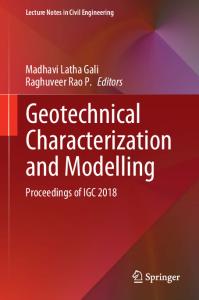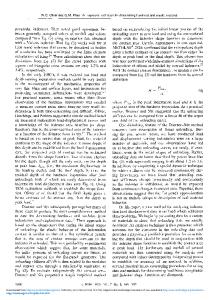Comparison of methods for determining shear modulus of wood
- PDF / 1,461,992 Bytes
- 8 Pages / 595.276 x 790.866 pts Page_size
- 6 Downloads / 380 Views
ORIGINAL ARTICLE
Comparison of methods for determining shear modulus of wood Robert Krüger1 · André Wagenführ1 Received: 19 November 2019 © The Author(s) 2020
Abstract In this study, the relatively new picture frame method applied to wood is compared with three established shear test methods, namely the experimental modal analysis, the square plate twist method and the torsion test. For the investigations, the wood species European beech (Fagus sylvatica L.) and spruce (Picea abies L. Karst.) were used and the shear tests were conducted in LR and RL direction. The results show comparable shear moduli for beech and spruce in the range of 931–1289 Nmm−2 and 495–842 Nmm−2, respectively. In contrast to the theory of linear elastic orthotropic materials, significant differences in the results of the picture frame method between LR and RL direction were observed for spruce.
1 Introduction There is currently no valid European standard for determining the shear modulus of small clear wood samples. Many methods of direct or indirect determination have been investigated in the past. Indirect methods are used to determine the shear modulus as a by-product when measuring other mechanical properties such as bending tests (Brabec et al. 2017). A detailed literature review is given by Brabec et al. (2017) and Krüger et al. (2018). The following test methods are currently known for testing shear modulus of wood: torsion test (Stamer and Siegelschmidt 1935; Schwab and Polaczek 1977; Grimsel 1999; Brabec et al. 2017); offaxis tension test (Yoshihara and Ohta 2000; Xavier et al. 2004); three-point bending with different width/span ratios (Yoshihara et al. 1998); standard four-point bending with shear field evaluation between upper and lower support (DIN EN 408 2012; Brandner et al. 2008); four-point asymmetric bending (Yoshihara and Kubojima 2002); Iosipescu test (Xavier et al. 2004; Yoshihara et al. 2001); Arcan test (Müller et al. 2015; Xavier et al. 2009); rolling shear test setup according to ASTM D1037 (Sretenovic et al. 2004); square-plate twist test (Bodig and Jayne 1982; Yoshihara and Sawamura 2006); picture frame method (Krüger et al. 2018); experimental modal analysis (Nakao and Okano 1987; Yoshihara 2009) and methods using ultrasonic waves (Bucur * Robert Krüger robert.krueger1@tu‑dresden.de 1
Institute of Natural Materials Technology, Technische Universität Dresden, 01062 Dresden, Germany
and Archer 1984; Keunecke et al. 2007; Hering et al. 2012; Longo et al. 2018). Only a few of these methods produce a quite uniform shear deformation state (Arcan, Iosipescu, Torsion, picture frame). Krüger et al. (2018) showed, in the application to wood, a new method for the determination of shear properties. An established method, the picture frame method for fibrereinforced composites (DIN SPEC 4885 2014), was used and adapted to wood. It is suitable for investigating both shear modulus and shear strength. There is currently no direct comparison of this new method with other established methods for determining the shear modul
Data Loading...











